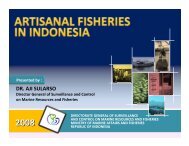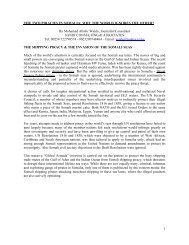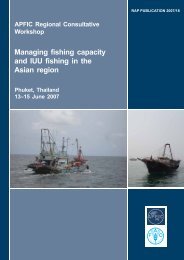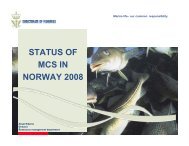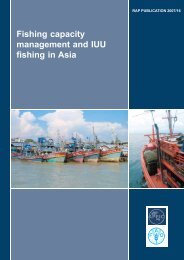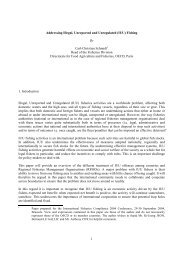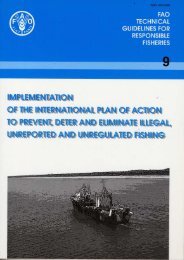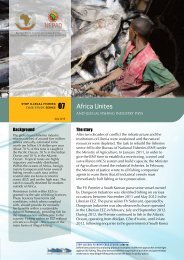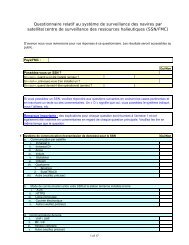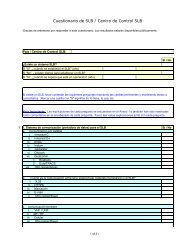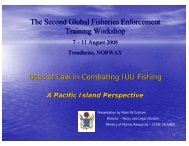Fishing Vessel Monitoring Systems: Past, Present and Future
Fishing Vessel Monitoring Systems: Past, Present and Future
Fishing Vessel Monitoring Systems: Past, Present and Future
You also want an ePaper? Increase the reach of your titles
YUMPU automatically turns print PDFs into web optimized ePapers that Google loves.
VMS: <strong>Past</strong>, <strong>Present</strong> <strong>and</strong> <strong>Future</strong> 41<br />
mobile entity can practically travel to respond to a system alarm. Using<br />
this response radius as a reference, the system should be able to, with<br />
each position report received from a patrol vessel or aircraft, create a<br />
circular geographical area (see manual input data files below) which we<br />
will refer to as a response zone.<br />
Catch reports: Data files containing information on what has been caught<br />
on board a fishing vessel. Fields include�: date of catch�; fish species,<br />
quantity (can be expressed either in weight, i.e. pounds, kilos or stone, or<br />
in volume, i.e. number of boxes), <strong>and</strong> caliber. Please note that, though<br />
position input to the VMS is automatic, catch data is keyed in manually.<br />
The specific format for this data varies significantly from country to<br />
country.<br />
Boarding <strong>and</strong> sighting reports: Filed by patrol vessels <strong>and</strong> aircraft<br />
respectively based on boarding observations or remote sightings of fishing<br />
vessel activity. Will generally follow custom format with additional text<br />
panel for observations.<br />
<strong>Vessel</strong> permanent data files: The system will store separate files for<br />
each of the vessels under management which will include information<br />
such as�: vessel name, length, date <strong>and</strong> place of building, tonnage, type<br />
(trawler, purse seiner, beam trawler, etc.), maximum fishing speed, normal<br />
position reporting interval, normal catch reporting interval, vessel owner,<br />
captain <strong>and</strong> permanent crew with address, etc., species normally fished,<br />
species for which quotas are held. This list is not exhaustive <strong>and</strong> will vary<br />
from agency to agency. When this file is retrieved, it should also permit<br />
access to the vessel’s previous record (a list of all boardings <strong>and</strong> the<br />
corresponding reports as well as a list of all violations <strong>and</strong> suspected<br />
violations, i.e. events <strong>and</strong> alarms) <strong>and</strong> quota status.<br />
6.7 Dealing with of st<strong>and</strong>ards<br />
Once it is decided which of these data sets will be available, <strong>and</strong> under which<br />
circumstances, there must be unanimous agreement upon the form in which they<br />
will be sent, the security measures to be used to identify the requesting party,<br />
<strong>and</strong> the means of sending the data.<br />
This means that a family of norms <strong>and</strong> st<strong>and</strong>ards for data transfer will either have<br />
to be defined, or adopted from an existing data sharing scheme. In all likelihood,<br />
the result will probably be a combination of new approach <strong>and</strong> adoption of a<br />
satisfactory operation already in service. Considerable help can be had from<br />
some existing data sharing efforts in the same area.




